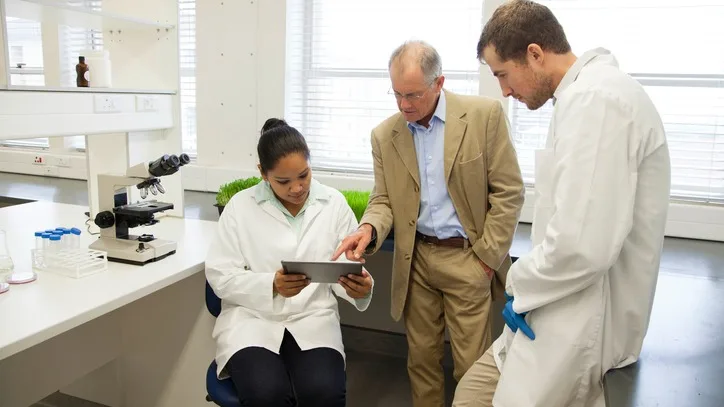
Overview
Faced with shrinking budgets, academic and industry life science researchers are making strategic partnerships their top priority.
Amid budget cuts and recession fears, researchers seek collaborations to fund innovation and stay on track
Scientists are more focused than ever on finding external partners to help them continue their life science research, as financial pressures and budget cutbacks make life difficult for the healthcare industry, according to a new survey.
Finding new collaborations and external partners jumped from the third-highest priority in January to the top spot for the second half of 2025, according to research firm Linus’ mid-year State of Science survey.
The change signals a pivot in how researchers approach their work, compared to prior Linus surveys that showed investigators prioritized adopting new data techniques or implementing artificial intelligence tools.
The driving force behind this shift is clear: money. More than half of scientists seeking new partnerships say their primary goal is securing funding sources, according to the survey of 450 scientists, of whom 49 percent work in academic settings and 51 percent span industry settings, across North America, Europe and Asia Pacific.
"Given the current state of the industry and macro-economics at play, an unprecedented number of scientists are looking for new sources of funding and new collaborations,” said Hamid Ghanadan, CEO of Linus, in a statement. “We see this resulting in the same dynamics as industry consolidation: should these collaborations prove successful, these larger research groups will represent a larger share of voice and help determine the future priorities for the industry."
Research Budget Cuts Hit Academia Hardest
Academic scientists face the steepest financial challenges. They expect their budgets to decrease by a median of 20 percent this year, double the 9 percent decline anticipated by their counterparts in biopharma and pharmaceutical companies, according to the survey.
The funding gap shows up in how different sectors approach partnerships. Among academic researchers seeking collaborations, nearly two-thirds are focused on finding new sources of funding.
In contrast, just 34 percent of biopharma scientists cite funding as their main partnership goal, with many instead focusing on regulatory support and translational research projects.
This disparity reflects the different financial realities facing each sector. Academic institutions depend heavily on federal grants and government funding, which researchers increasingly expect to shrink under changing political priorities. Private companies have more diverse revenue streams and greater financial stability.
The survey found that 69 percent of academic scientists in the United States expect funding to decrease as a result of changes in the federal administration, compared to 36 percent of biopharma scientists.
71 Percent of Scientists Expect a Recession in 2025
The expectations of funding shortfalls and lower budgets has soured scientists’ views on the broader economy. Seventy-one percent of respondents said they expect a recession in the second half of 2025, up 26 percentage points since January.
Nearly half of scientists who anticipate a downturn said they are preparing by applying for new sources of funding, and around 40 percent expect to decrease their purchases of everyday lab products as a result.
However, these perceptions may not reflect the real economic situation, said Ghanadan. According to the report, 40 percent of scientists say they expect budgets to decline, but only 27 percent say they have already experienced cuts this year.
"In our experience, we see a double reality in the market: one dominated by digital media, which is creating a negative perception and recessionary fears, and a tangible reality, where scientists are making pragmatic decisions and moving their work forward,” Ghanadan said.
Research Shifts Strategy to Financial Pressure
As financial constraints tighten, scientists are adapting their research strategies in different ways depending on their institutional setting. Academic researchers increasingly plan to bring routine assays and analyses in-house to reduce costs, with 48 percent taking this approach. Meanwhile, 54 percent of biopharma scientists plan to outsource the same types of work, suggesting they view external partnerships as more cost-effective than maintaining internal capabilities.
Both sectors share some common strategies for managing economic uncertainty. Across all respondents expecting recession, 52 percent plan to apply for new funding sources, while 37 percent intend to delay technology purchases until later in the year.
Technology Purchases Continue Despite Constraints
Even amid budget pressures, the survey found that 42 percent of scientists still plan to invest in new technologies in 2025, though this represents a decline from previous years. Sequencing tools have returned to the top of scientists' technology purchase lists after briefly losing ground to AI applications earlier in the year.
Scientists named automation and machine learning as other key goals. Forty-two percent said they plan to adopt new techniques to acquire data, and 36 percent selected AI or machine learning adoption as a top-three priority. This finding echoes Cure’s The Future of Healthcare Innovation 2025, which in June reported that AI and its subfield machine learning place first among innovation-enabling tools.
Scientific Confidence Remains Despite Challenges
While the number of respondents who express confidence in their ability to meet their productivity goals this year has declined by 12 percent, half of scientists still maintain they will hit their targets.
Ghanadan recommends scientists sharpen their messaging so they can articulate to potential partners what makes their research stand out.
“We believe that entrepreneurs should connect with and keep their audience grounded in reality, use clear, concise language to state the value of their offering. We also recommend to earlier stage companies the importance of thought leadership, clearly stating who/what they are fighting for, and who/what they are fighting against,” he said.








